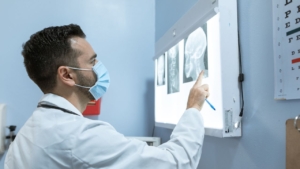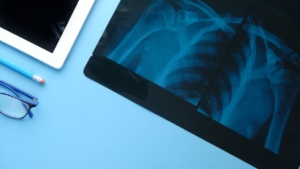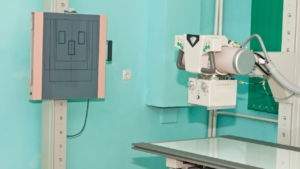Key Takeaways:
- Contrast Media Allergies: These reactions can range from mild to severe and are crucial to manage for patient safety.
- Allergy Management: Key steps include screening, premedication, alternative agent selection, and post-procedure monitoring.
- Protocol Importance: Implementing robust allergy protocols ensures safe imaging practices and minimizes the risk of adverse reactions.
- Advancements: Ongoing research focuses on developing safer agents, utilizing AI, and implementing standardized protocols to enhance patient safety.
- Patient Safety: Prioritizing patient safety involves identifying high-risk patients, choosing appropriate agents, and ensuring staff are trained to handle emergencies.
Ensuring high-risk patient safety during medical imaging procedures involving contrast media is a top priority for healthcare providers.
Managing contrast media allergies effectively is critical to preventing complications and delivering accurate diagnostic results.
With robust contrast allergy management strategies, healthcare professionals can confidently navigate even the most sensitive cases.
A Brief Insight Into Contrast Media Allergies
Contrast media allergies are adverse reactions triggered by substances used to enhance imaging clarity during diagnostic procedures. These reactions can range from mild symptoms, such as itching or hives, to severe responses like anaphylaxis.
Key factors contributing to contrast media reactions include:
- Iodinated contrast reactions are commonly seen in CT scans.
- Rare instances of gadolinium allergy management in MRI procedures.
- Underlying patient conditions that increase sensitivity to allergens.
Recognizing these factors is essential for implementing effective safety measures.
Steps for Contrast Allergy Management
Effective contrast allergy management involves a series of proactive measures to mitigate risks for high-risk patients.
Steps include:
- Screening and history-taking: Identify patients with a history of contrast media allergies or other hypersensitivities.
- Premedication for contrast allergies: Administer antihistamines or corticosteroids prior to the procedure to reduce the likelihood of a reaction.
- Choosing alternative contrast agents: Opt for low-osmolar or iso-osmolar iodinated contrasts, or gadolinium-based agents with proven safety records.
- Post-procedure monitoring: Closely observe patients for delayed reactions or symptoms.
By following these steps, healthcare providers can minimize risks and maintain safe imaging practices for all patients.
Essential Allergy Protocols for Radiology
Implementing allergy protocols for radiology ensures that imaging procedures are safe and effective for high-risk patients.
Essential protocols include:
- Maintaining an emergency response kit with epinephrine and other life-saving medications.
- Using safe imaging practices, such as limiting the amount of contrast administered.
- Educating radiology staff on recognizing and managing contrast reactions and gadolinium allergies.
- Documenting all allergic reactions in patient records to inform future procedures.
These protocols create a structured approach to handling contrast-related risks, improving patient outcomes.
Advances in Allergy Prevention in Medical Imaging
Technological advancements and updated guidelines have enhanced allergy prevention in medical imaging, providing safer alternatives for high-risk patients.
Emerging practices include:
- Development of low-allergen contrast agents to reduce hypersensitivity reactions.
- Integration of AI tools to predict patient risk based on medical history.
- Adoption of standardized allergy protocols for radiology across healthcare facilities.
These innovations pave the way for more effective contrast allergy management and improved diagnostic accuracy.
The Spectrum of Contrast Reactions
Contrast reactions can vary widely in severity, from mild reactions like nausea or skin rashes to life-threatening anaphylactic reactions. These responses are influenced by factors such as the type of intravenous contrast material used and individual patient sensitivities.
Key classifications include:
- Mild reactions: Symptoms like itching, mild swelling, or dizziness that typically resolve without treatment.
- Acute reactions: Rapid onset symptoms requiring immediate intervention, including difficulty breathing and severe hypotension.
- Anaphylactoid reactions: Non-allergic, but severe responses resembling anaphylaxis.
Understanding these classifications allows health care providers to anticipate and manage potential outcomes effectively.
Identify Patients at Risk
Recognizing patients at risk is a critical step in mitigating adverse contrast reactions during diagnostic imaging. Certain individuals face an elevated risk of harm due to pre-existing conditions or prior reactions to contrast agents.
Common risk factors include:
- History of allergic-like reactions to iodinated contrast media or gadolinium-based contrast agents.
- Underlying conditions like asthma, cardiovascular disease, or kidney dysfunction.
- Use of medications that may exacerbate reactions, such as beta-blockers or ACE inhibitors.
Proactive risk identification helps ensure a safe patient experience by tailoring imaging protocols to individual needs.
Safe Use of Iodinated and Gadolinium-Based Contrast Agents
The choice of agent plays a pivotal role in managing adverse contrast reactions. Both iodinated contrast media and gadolinium-based contrast agents are essential for enhancing imaging clarity but require careful consideration.
Safe practices include:
- Opting for low-osmolar iodinated contrast media to reduce the likelihood of adverse effects.
- Administering gadolinium-based contrast agents with a proven safety record in magnetic resonance imaging.
- Using oral agents or non-contrast imaging methods when appropriate to minimize risk.
By tailoring contrast media selection, health care providers can reduce the risk of complications and ensure effective diagnostics.
Immediate Management of Severe Reactions
In the rare event of severe reactions, including anaphylactic reactions and fatal reactions, prompt intervention is crucial. First-line health care responses can prevent escalation and improve outcomes.
Essential steps include:
- Immediate administration of epinephrine for acute reactions like anaphylaxis.
- Ensuring airway management and oxygen supply for respiratory distress.
- Monitoring vital signs and administering intravenous fluids to stabilize the patient.
Effective emergency management ensures that even high-risk scenarios are addressed with precision and care.
Training and Education for Healthcare Providers
Empowering healthcare providers with the knowledge and skills to manage contrast media allergies is crucial for improving outcomes in high-risk scenarios.
Comprehensive training ensures that staff can respond effectively to severe reactions and implement preventive measures.
Training focuses on:
- Recognizing risk factors and identifying patients at risk before administering intravenous contrast material.
- Handling acute reactions, including anaphylactic reactions and anaphylactoid reactions, with confidence and precision.
- Implementing and adhering to safety protocols during procedures involving iodinated contrast media and gadolinium-based contrast agents.
- Educating staff on the use of emergency equipment and medications for immediate response.
Ongoing education ensures that healthcare teams stay updated on the latest practices and maintain high standards of patient safety in every imaging procedure.
Enhance Safety Protocols in Diagnostic Imaging
Implementing robust safety protocols is essential for minimizing the risk of adverse contrast reactions in diagnostic imaging. These guidelines provide a systematic approach for healthcare providers to follow during high-risk procedures.
Key elements include:
- Comprehensive patient screening to identify risk factors before administering contrast.
- Detailed protocols for administering intravenous contrast material safely.
- Regular training for staff on recognizing and managing allergic-like reactions and anaphylactoid reactions.
These protocols support a culture of safety, ensuring that every patient receives the highest standard of care.
Ensure Safe Imaging Practices with Expert Solutions
Prioritize safe patient care and minimize risks during diagnostic imaging with effective safe imaging practices.
Equip your facility with the knowledge, protocols, and tools needed to handle adverse contrast reactions confidently.
Call Spectrum Medical Imaging Co. today at 800-859-6162 to learn more about our comprehensive imaging solutions tailored for high-risk scenarios!




